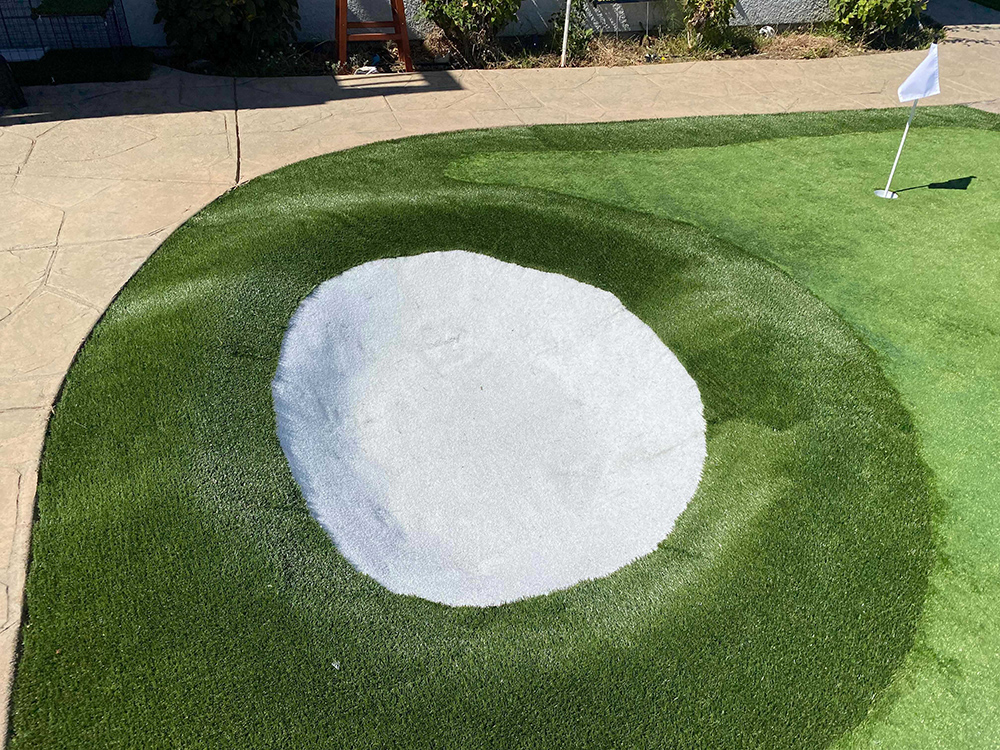If you love golf and live in the Garden State, you can easily bring the experience of a real golf course right into your backyard. Installing a backyard putting green replete with sand traps and water hazards can be an exciting project. This feature not only brings the joy of golf to your home, but also enhances the aesthetic appeal of your property and increases its market value. Here’s your guide on how to add sand traps and water hazards to your backyard putting green in New Jersey.
Securing Necessary Permits
In New Jersey, a permit may be required, depending on the scope of the project. To avoid problems in the future, your first essential step is to check with your local county’s building department. All required permits must be obtained before any excavation work begins.
Choosing Artificial Grass for Your Putting Green
Artificial grass for putting greens serves as an excellent choice for New Jersey homeowners. Over the years, there has been a significant rise in the popularity of these versatile, durable, and attractive pieces of artificial grass. They are resilient to New Jersey’s diverse weather conditions, require little maintenance, and provide a near-authentic golf experience.
Adding top-quality residential artificial grass to your backyard assures that you have a putting green that is accessible and useable throughout the year, no matter the weather condition.
Planning Sand Traps and Water Hazards
Sand traps and water hazards add a level of challenge to your backyard putting green, contributing to a more authentic golfing experience. As you commence your project, first determine where you want these features to be placed. Most professional courses put sand traps near the green, while water hazards might be more strategically placed. Keep in mind; they must also function as effective drainage systems.
Installation Process for Sand Traps and Water Hazards
The installation process for sand traps and water hazards involves careful planning, precise measurements and efficient drainage. For sand traps, an eight-inch excavation is recommended. In terms of size, ten square feet is typical for backyard putting greens. For water hazards, consider your property’s drainage. If your backyard has a slope, utilize it effectively to lead water away from the property and towards your water hazard.
Maintaining Your New Backyard Putting Green
Maintenance is an essential part of owning a backyard putting green. Fortunately, if you’re using artificial grass, this will be considerably easier than tending to a real grass green. Regular brushing can keep the artificial grass surface looking natural and lush. Regularly checking over your sand traps and water hazards for debris will also ensure they maintain their attractive appearance and functionality.
For New Jersey homeowners, using locally sourced sand for your sand trap can give your putting green a unique, localized feel. Certain portions of New Jersey, especially regions along the Jersey Shore, are known for their distinct sand characteristics, giving your backyard putting green an appeal that is uniquely New Jersey.
Constructing a backyard golf green can be complex, especially if you’re planning to include sand traps and water hazards. You wouldn’t want to end up with a flooded backyard or an unusable green. Therefore, if you’re uncertain about the process, it’s always advisable to consult with professionals.
Are you thinking about installing an artificial grass putting green complete with sand traps and water hazards? Send us a message today. We can gladly answer questions and can even recommend top-tier local installers in New Jersey if you need one. Trust us; this backyard upgrade is one that you can enjoy with friends and family for a very long time. Message us now!
